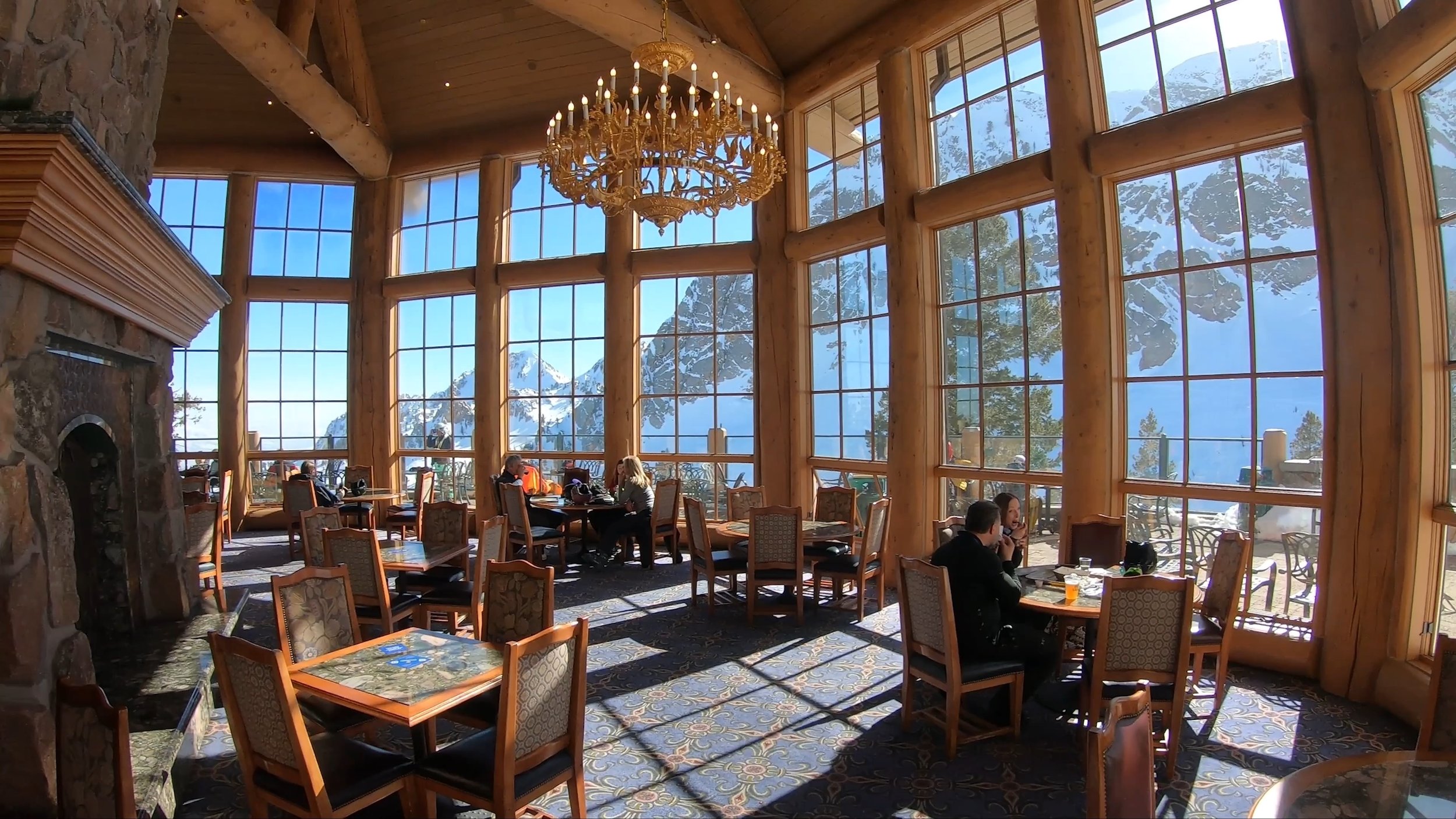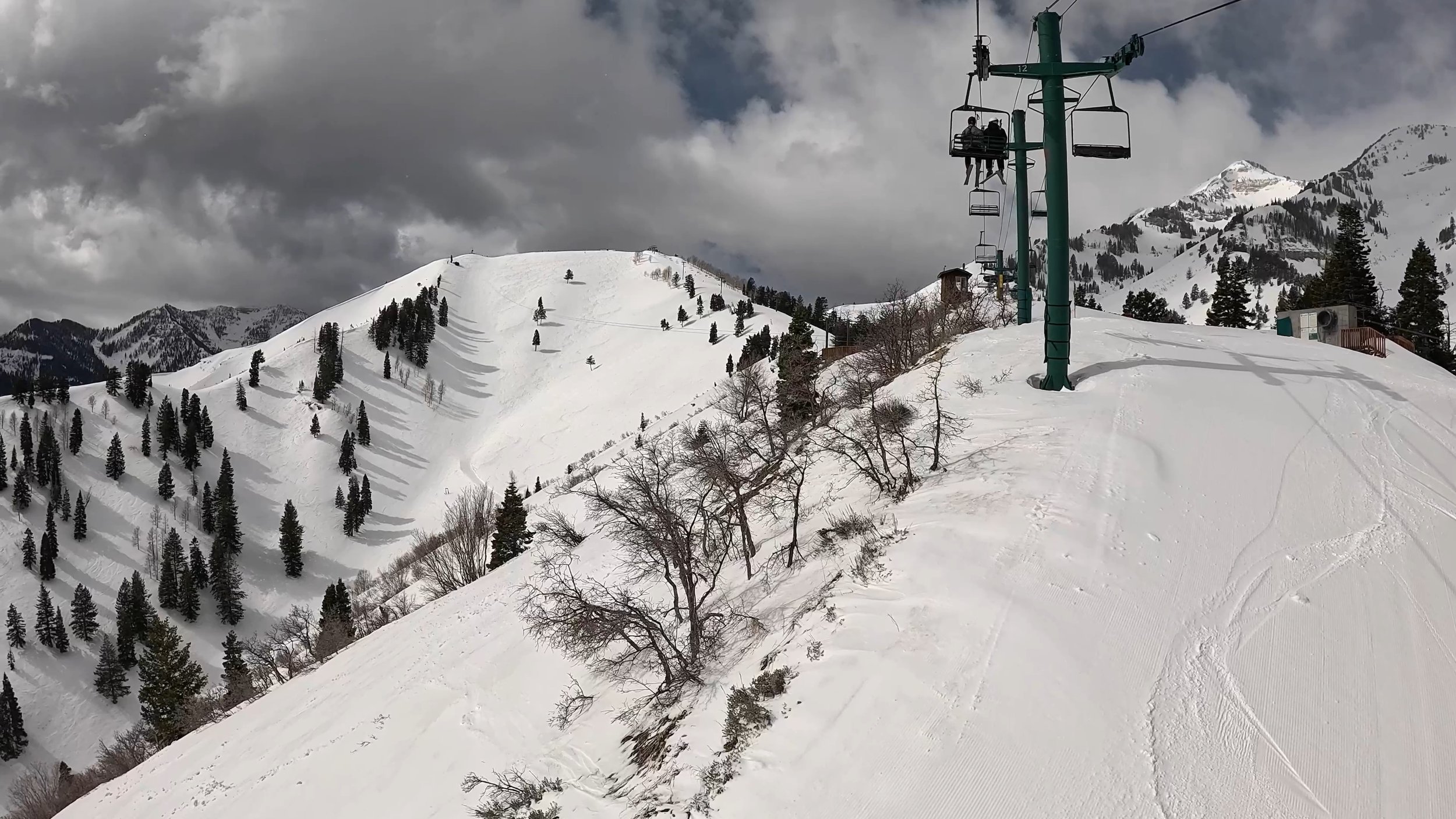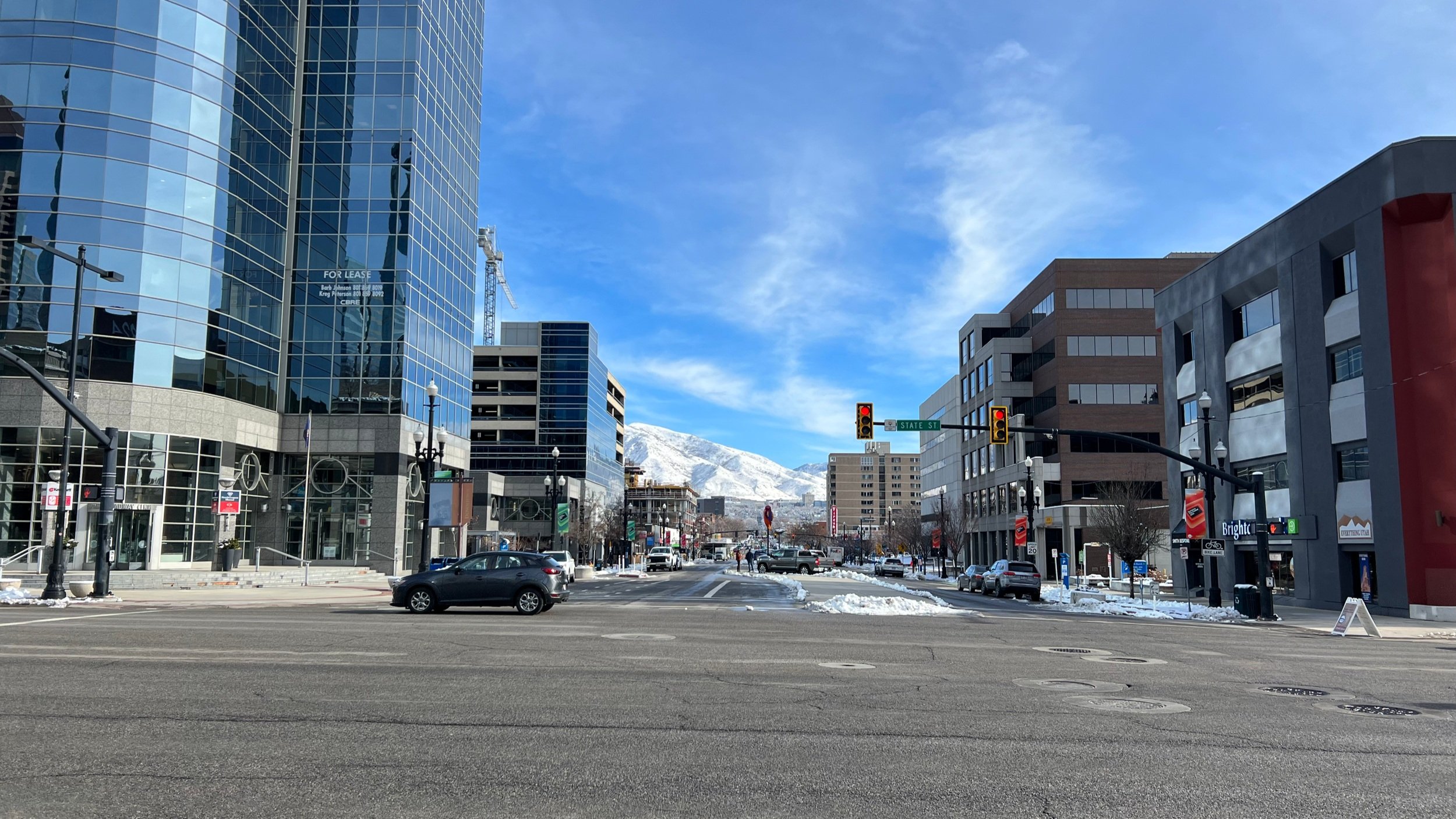Salt Lake City Has Been Selected for the 2034 Olympics. Here Are the Ski Resort Upgrades to Expect.
Salt Lake City is set to host the Winter Olympics for the second time in the 21st century.
UPDATE 7/28/24 8pm: Updated to accurately reflect the events that each ski resort is hosting.
The Winter Olympics are coming to Salt Lake City—again. This past week, the International Olympic Committee voted to pass the Olympic torch back to Utah’s capital city, meaning it will host the games for the second time in the 21st century.
But hosting the Olympics doesn’t just mean setting up some competition courses—doing so will involve profound capital investments and marketing pushes, even though the resorts already have a ton of infrastructure from when they hosted back in 2002. As a result, it’s fair to assume that the bulk of major Utah ski resorts—all of which are within an hour’s drive of Salt Lake City—will see substantial changes to their overall mountain experience in preparation for the games.
So what should you expect for the 2034 Salt Lake City Winter Olympics, and what kinds of experience changes will the resorts see as a result of the games? In this piece, we’ll go through just that.
Which Ski Resorts Will Host The 2034 Olympics?
Salt Lake City is going to spread the events across multiple different mountains. At this point in time, the host roster is the same as that of the 2002 Olympic Games.
Barring any substantial changes, Deer Valley, Snowbasin, and Park City will host the vast majority of skiing and snowboarding events. As with in 2002, Deer Valley will host the freestyle slalom, aerial, and mogul skiing events, Snowbasin will host the men’s and women’s alpine downhill and super-G skiing competitions, while Park City will host the freestyle giant slalom and halfpipe snowboarding events. All three of these resorts still have the infrastructure to support these events again in 2034, and we expect significant capital upgrades in the direct vicinity of where these events are taking place.
At each of these resorts, a few specific places are clear candidates for resort upgrades.
As the only chairlift that offers lappable access to Deer Valley’s three Olympic competition trails, the Carpenter Express is a clear candidate for an upgrade.
Expected Lift Upgrades for Deer Valley
At Deer Valley, it’s easy to envision the Carpenter Express, which serves all three of the trails that hosted competitions at the resort’s 2002 Olympic Games, receiving an upgrade to either a six-pack or gondola. This lift will be nearly 40 years old by the time of the games, so it may just need a lifecycle replacement anyway. Observant industry followers may note that Deer Valley is expected to install a different gondola out of its Snow Park Base as part of its Mayflower expansion, but this gondola will not stop at the part of the mountain needed to access the three competition runs, so a separate Carpenter upgrade is likely in the cards to exclusively serve these trails.
Both Snowbasin’s John Paul Express (top terminal pictured) and Allen Peak Tram (bottom terminal on the right) will be over 35 years old by the time of the 2034 Games, making them clear candidates for upgrades.
Expected Lift Upgrades for Snowbasin
At Snowbasin, the Strawberry Gondola, Needles Gondola, John Paul Express, and Allen Peak Tram will all be over 35 years old by the time of the games. The latter two directly serve the Olympic competition runs, so those lifts are clear candidates for capacity upgrades of some sort. If Snowbasin indeed does host some events in 2034, we wouldn’t be surprised to see John Paul upgraded to at least a six pack and the 15-passenger Allen Peak Tram replaced with a more traditional 40 to 60-passenger model, provided there is enough room at the top terminal.
Park City has been blocked from replacing its Eagle triple chair, pictured on the far right, for years—but the 2034 Olympics may break that stalemate.
Expected Lift Upgrades for Park City
Finally, the 2034 Olympics may break the stalemate that Park City Mountain Resort has had with the town of Park City over additional lift investments to increase its out-of-base capacity. The town recently blocked the resort from upgrading its Eagle triple chair to a six-pack over crowding concerns, but the Eagle lift also happens to be exactly where the terrain used for the 2002 Olympic freestyle events is located. It’s really hard to believe that the town wouldn’t let the proposed six-pack upgrade go through if Park City hosts these events again in 2034.
Expect many Utah ski resorts to upgrade their on-mountain lodges to keep Olympics guests comfortable during the 2034 Games.
Expected Facilities Upgrades
We wouldn’t be surprised to see these resorts see on-mountain facility upgrades as well. Snowbasin’s extraordinary base and mid-mountain lodges were built as part of their 2002 Olympics capital improvements, so it’s not out of the question that the resorts hosting the 2034 events will invest in new complexes to keep visitors comfortable during the cold-weather conditions of the games.
2034 Olympics: Big and Little Cottonwood Canyons
As a result of their difficult logistics, it’s very unlikely that any of the Cottonwoods resorts—which include Alta, Snowbird, Brighton, and Solitude—will host Olympic events. However, even if they don’t host any events, we might see some significant resort enhancements anyway thanks to the resorts taking advantage of the increased global visibility.
The 2002 Salt Lake City Olympics set the precedent for these types of investments. In the five years directly before the 2002 Games, Snowbird opened its Mineral Basin backside as a major expansion area, Alta replaced its Sugarloaf triple chair with a high-speed quad, and Brighton replaced its Snake Creek triple chair with a high-speed quad.
Three out of the four of the Cottonwoods resorts (Snowbird, Brighton, and Solitude) are now owned by capitally-liberal ski resort mega corporations such as Alterra, Boyne, and Powdr, none of whom have shied away from investments in recent years. However, don’t be surprised if we see some big ones occur in the years directly preceding the games.
For the best sense of what these investments might be, it’s worth looking at the resorts’ Master Development Plans. These plans are way too detailed to fully cover in this article, but a few examples of projects to expect include a two-stage, out-of-base gondola at Solitude, expanded base facilities at Alta, and an extended lift line and capacity increase for Snowbird’s backside Mineral Basin Express lift. Maybe Brighton will take the Olympics as an opportunity to increase the size of its new but tiny Snake Creek Lodge!
In the event that a new competition is added to the 2034 Winter Olympics, it’s not completely out of the question that an under-the-radar hill such as Sundance could be asked to host it.
2034 Olympics at Smaller Utah Ski Areas
One possibility that’s unlikely—but not impossible—is that an under-the-radar local hill will receive upgrades to not only turn it into a viable Olympics course, but also transform it into a true fly-to destination.
After all, what if a new competition gets added by 2034? Additions to the Winter Olympics happen all the time, with events such as big air freestyle skiing and mixed team snowboard cross added just in 2022.
It may be easy to forget, but this type of destination-grade transformation is actually what happened with Snowbasin for the 2002 Olympic Games. The resort saw 40% of the terrain that exists today, both of its gondolas, its Allen Peak Tram, and its first high-speed chairlift all installed specifically to complement the games. In the remote chance that Salt Lake City and other stakeholders decide to invest in a smaller mountain such as Sundance or Nordic Valley to give them a chance to host some events, we could see these mountains propelled onto the destination stage as well.
Believe it or not, an Olympic-grade skiing and snowboarding ramp is expected to be installed in downtown Salt Lake City for the 2034 Games. The build will host big air freestyle competitions.
Are Ski Slopes Coming to Downtown Salt Lake City?
While there’s a lot of attention on the resorts themselves, one of the most interesting parts of the 2034 Games is that there’s a plan to bring the ski slopes directly to downtown Salt Lake City.
When it comes to hosting the big air freestyle skiing and snowboarding competitions that were just recently added, none of Utah’s existing resorts currently have the requisite infrastructure. So how is Salt Lake City going about solving this? Well, it turns out that the venue for this will be a massive skiing and snowboarding ramp just blocks from the center of the city.
This marks the first time a ski slope will ever be constructed in downtown Salt Lake City, and its development indicates that even if new Winter Olympics skiing and snowboarding events emerge over the next decade, the city is not locked into holding them at the ski resorts themselves.
Expect significant enhancements in snowmaking technology before the 2034 Games to ensure reliable slope conditions during competitions.
Snowmaking Enhancements
In addition to the flashier upgrades we just highlighted, we expect Utah’s ski resorts to see some investments from a more practical standpoint. One key area that we’ll likely see a lot of focus on is snowmaking. As winters in Utah have continued to become less and less reliable—and there being no sign of that trend ending anytime soon—the resorts will need to make sure there’s enough of a snow base to not just host the Olympic Games themselves, but also provide reliable recreational slopes as well. Expect extensive snowmaking upgrades at every resort that’s hosting an event, with expanded capabilities in places that don’t currently have snowmaking—and the installation of more efficient snow guns in areas that have been using the same machines for decades now.
Environmental Sustainability Initiatives
Speaking of efficiency, the International Olympic Committee has been focused on the environmental sustainability of its games for years now—after all, if the snow stops, the Winter Games won’t be a thing—so expect them to subsidize programs that prioritize environmentally-friendly recreation. In addition to more efficient snowmaking technology, expect investments in renewable energy such as wind, solar, and biodegradables. Several Utah resorts, including Park City and all the mountains in the Cottonwoods, have been moving towards net-zero emissions for years, but expect additional investments from those funding the Olympics to accelerate them towards that goal.
Expect new and renovated on-site lodging at the Utah ski resorts over the next few years.
Lodging and Temporary Housing
Another facet of the 2034 Olympics that the ski resorts will need to prepare for is in on-site lodging. With the influx of out-of-towners set to visit for the Olympic Games—and a number of folks expected to temporarily move there to actually put on the events—expect several hotel and short-term housing developments to account for demand.
We wouldn’t be surprised to see the bulk of these developments based directly in Salt Lake City—especially in the athlete village that, like in 2002, will be based at the University of Utah. However, resorts such as Snowbasin and Deer Valley certainly have room to add some more hotels—and with both mountains already expected to add on-site lodging in the coming years, they could potentially take advantage of Olympic funds to expand their lodging developments even further than initially intended. Even at existing lodging options, we might see major renovations to get them into tip-top shape for the Games.
The Salt Lake City region’s neglected public transportation network could get some much needed attention as a result of the 2034 Olympic Games.
Road and Public Transportation Upgrades
While Salt Lake City locals may not be looking forward to the traffic that will likely come with 2034’s Olympic Games, one potential long-lasting benefit that could come with the Olympics is the investments in roads and public transportation infrastructure.
It’s worth noting that Salt Lake City took advantage of the 2002 Olympics to install its downtown light rail system. While no official plans to do this have been announced, expanding this network into the mountains—and perhaps some of the ski resorts—would be a game-changer, turning any resorts with direct light-rail service into the only ones in North America with frequent rapid rail transit. Even adding a much more robust public bus system or widened access roads could substantially improve the way people access Utah’s ski resorts.
Unfortunately, public bus service to Utah’s ski resorts has been cut in recent years, and parking has both become more pricey and harder to plan for, with many resorts implementing frustrating paid reservation systems. The 2034 Olympics could be the opportunity the state needs to finally rectify these wrongs. If the state knows what it’s doing and gets recreational visitors used to using public transportation options, they could prove sustainable and get personal cars off the road for years to come.
Salt Lake City and the surrounding ski resorts will be able to reuse several facilities for the 2034 Olympic Games, cutting down on capital costs.
How Will Salt Lake City’s Investments for the 2034 Olympics Compare to the 2002 Games?
So the announcement of the 2034 Winter Olympics means exciting times ahead for Salt Lake City and the nearby ski resorts over the next decade. But we do have to note that the investments for these games probably won’t be as extensive as they were for the 2002 Olympics.
First off, a lot of infrastructure to host the Olympic Games already exists. In fact, Salt Lake City cited its ability to keep costs down and reuse existing facilities as a factor in justifying its bid for the Olympics a decade from now.
In addition, Utah is not exactly an under-the-radar destination for winter sports anymore, with the region struggling more to keep crowds out than actually getting them to come to the state. One could argue the resorts don’t need the marketing to the same extent that they used to—especially those on the Epic and Ikon Passes.
Speaking of Epic and Ikon, we’re really interested to see how these products handle the explosive demand for skiing and riding in Utah the year the Olympics happen—provided these passes still exist at that point.
Salt Lake City has a unique set of circumstances that makes it an attractive location to host Winter Olympics competitions on a frequent basis.
Could Salt Lake City Become a Permanent Winter Olympics Host?
It’s worth noting that Salt Lake City’s selection for the 2034 Olympics may be emblematic of a world in which it hosts the games again in the near future. With fewer destinations willing to shell out the capital to make the games practically happen—and climate change making certain locations essentially unfeasible as hosts—the Winter Olympics may move to a circuit of rotating hosts rather than a truly new city every four years.
The International Olympic Committee recently noted that Salt Lake City was the only city that bid to be a host of either the 2030 or 2034 Olympics that actually seemed ready to host the competition. Does this mean that Salt Lake City will become a perennial Olympic town, and we’ll eventually see the Winter Olympics take place in Salt Lake City every four years? Only time will tell.
Final Thoughts
So while much is still to be decided before the games take place ten years from now, one thing is clear: Salt Lake City’s selection for the 2034 Olympics was not just a stroke of luck. The area has the natural snow conditions, basic infrastructure, and political will to not just make it a viable contender, but maybe the only one around—and the surrounding ski resorts will see substantial attention because of this. And thanks to being the only location that seriously considered hosting the 2034 Games, Salt Lake City will have the upper hand in laying down terms for its capital investments.
As plans materialize, we can’t wait to see what the region has in store.
Considering a ski trip to Utah this upcoming winter? Check out our full comprehensive Utah and Rockies ski resort rankings, as well as our Utah rankings in video form below.












